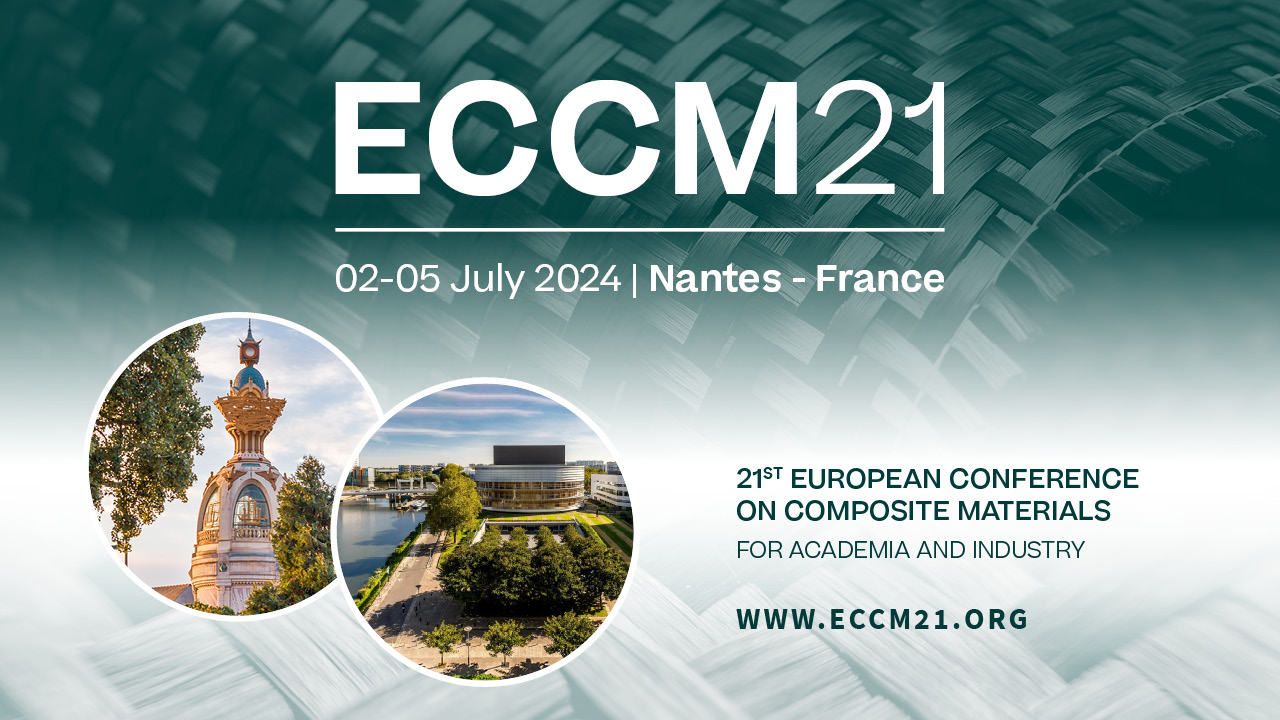Concept for a permeability model for non-crimp fabrics
Topic(s) : Special Sessions
Co-authors :
David DROSTE (GERMANY), Axel HERRMANNAbstract :
Liquid composite moulding is one of the most important manufacturing processes for fibre reinforced composites. The vacuum infusion is used for very large components (e.g. wind turbine rotor blades) while the resin transfer moulding (RTM) is used for small components (e.g. sports sector). The resin flow through the textile during the process can be described with the help of Darcy’s Law. The permeability in Darcy’s Law refers to the ability of the textile (porous media) to allow the flow of fluid through it. It is a property that varies depending on the type of material and its structure [1]. A problem-oriented design and optimisation of LCM processes is therefore only possible with precise knowledge of the permeability, which can be determined by experiments or numerical simulations [2].
Permeability of industrial textiles like non-crimp fabrics (NCF) is not homogenous and isotropic, but heterogenous, scale-dependent and orthotropic. Different scales need to be considered to model and compute the permeability of NCF correctly [3]. Firstly, a homogenization is performed on the micro-scale, where the fluid flow through the rovings is computed. Secondly, the meso-scale is considered to homogenize the macro-permeability. In this work, we focus on the meso-permeability of NCFs. The influences on the permeability will be investigated with numerical studies and evaluated with experimental data. The aim is to model the permeability only with specific textile parameters.
Extensive permeability characterization is the starting point for the investigation. To reduce the scope of the experiments to realisable level of attempts, only unidirectional and biaxial NCFs are used in the study. The most influential textile parameters on permeability are identified and later varied in the numerical analyses. The structure of the different NCFs are analysed and characterised with micrographs and µCT-data to generate a digital twin of the textiles. The digital twin creates unit cells for the meso-scale, which considers the variances of the textiles. Based on these geometries, the fluid flow through the textiles (cf. figure) and the permeability for each NCF are computed. The validation of the digital twin is done with the experimental data from the permeability experiments. Afterwards a numerical study is performed, in which the textile parameters are varied. The modelling of the structure and the computation of the permeability is done with GeoDict®.
The influence of the different textile parameters on the permeability is evaluated. With these results different concepts of permeability models are discussed. The experimental data and the numerical computations are the baseline to assess the quality of the models.
Permeability of industrial textiles like non-crimp fabrics (NCF) is not homogenous and isotropic, but heterogenous, scale-dependent and orthotropic. Different scales need to be considered to model and compute the permeability of NCF correctly [3]. Firstly, a homogenization is performed on the micro-scale, where the fluid flow through the rovings is computed. Secondly, the meso-scale is considered to homogenize the macro-permeability. In this work, we focus on the meso-permeability of NCFs. The influences on the permeability will be investigated with numerical studies and evaluated with experimental data. The aim is to model the permeability only with specific textile parameters.
Extensive permeability characterization is the starting point for the investigation. To reduce the scope of the experiments to realisable level of attempts, only unidirectional and biaxial NCFs are used in the study. The most influential textile parameters on permeability are identified and later varied in the numerical analyses. The structure of the different NCFs are analysed and characterised with micrographs and µCT-data to generate a digital twin of the textiles. The digital twin creates unit cells for the meso-scale, which considers the variances of the textiles. Based on these geometries, the fluid flow through the textiles (cf. figure) and the permeability for each NCF are computed. The validation of the digital twin is done with the experimental data from the permeability experiments. Afterwards a numerical study is performed, in which the textile parameters are varied. The modelling of the structure and the computation of the permeability is done with GeoDict®.
The influence of the different textile parameters on the permeability is evaluated. With these results different concepts of permeability models are discussed. The experimental data and the numerical computations are the baseline to assess the quality of the models.

